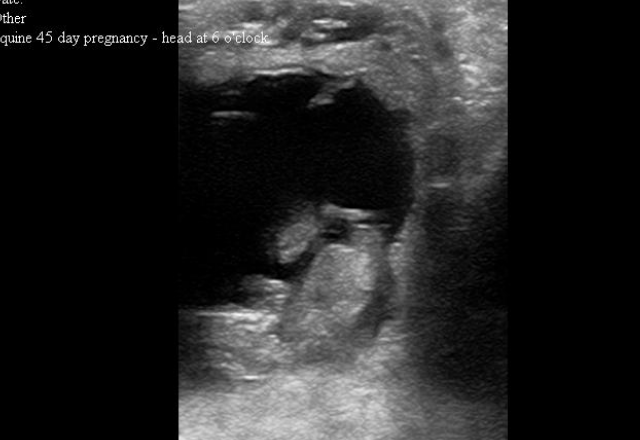Ultrasound is a specialized imaging technique that uses inaudible sound waves to create an image of soft tissue structures. It is one of our most frequently used non-invasive diagnostic tools.
Ultrasonography is used in lameness diagnostics to image tendon and ligament injuries, tendon sheaths and joint capsules. In equine reproduction, ultrasonography is used routinely for imaging uterine and ovarian structures to aid in timing of insemination and ovulation, pregnancy diagnosis, and evaluation of the reproductive tract in health and disease. Transabdominal ultrasound images of the late term equine fetus can help assess fetal well-being and gender. Colic cases benefit from the option of abdominal ultrasound as a part of a work up to help determine if surgery is necessary.
Using Ultrasound to diagnose your horse
Many different cases can benefit from ultrasound assessment.
- Lameness Diagnostics
- Tendon and ligament injuries
- Tendon sheath and joint capsule
- Equine reproduction
- Timing of insemination, pregnancy diagnosis
- Late term fetal well-being and gender assessment
- Transabdominal ultrasound
- Colic work up
Who can perform ultrasonography? Even though many ultrasonographic units are mobile, a licensed veterinarian must perform the imaging procedure for accurate diagnosis. Knowledge of the structures being imaged and use of the machine are necessary to accurately identify and image structures within the body associated with lameness and other diseases.
At TEC we also do ultrasound guided procedures. Ultrasound guidance ensures that a substance (such as stem cells, platelet rich plasma, etc.) is placed precisely in the injured portion of a tendon or ligament. It also ensures accurate placement of therapeutic agents into joints, tendon sheaths or bursae, including the cervical facets, sacroiliac joint, hip joint, shoulder joint and bicipital bursa. Ultrasound guidance is also routinely used to obtain samples from abdominal organs (liver, spleen, kidneys), masses or abscesses.


